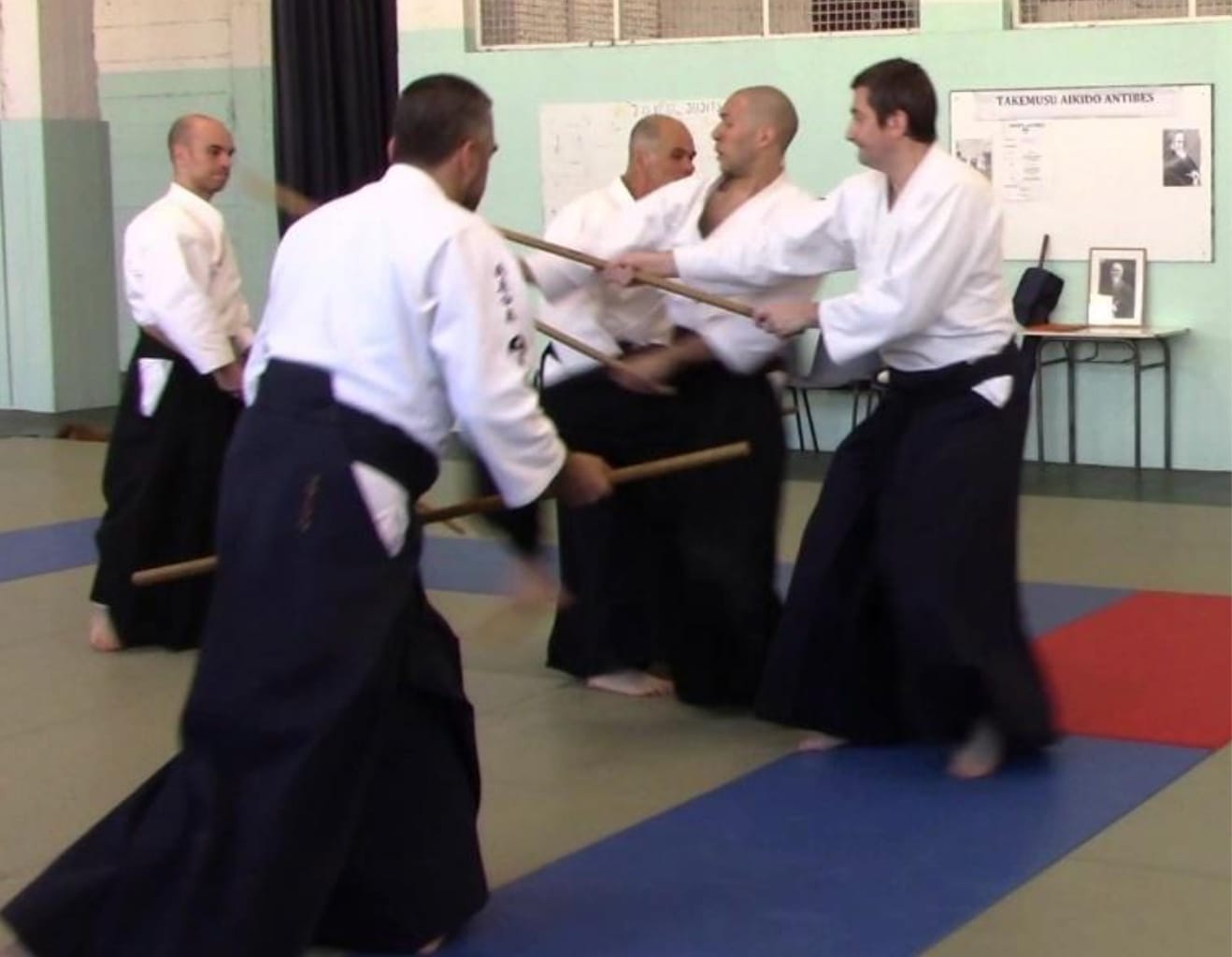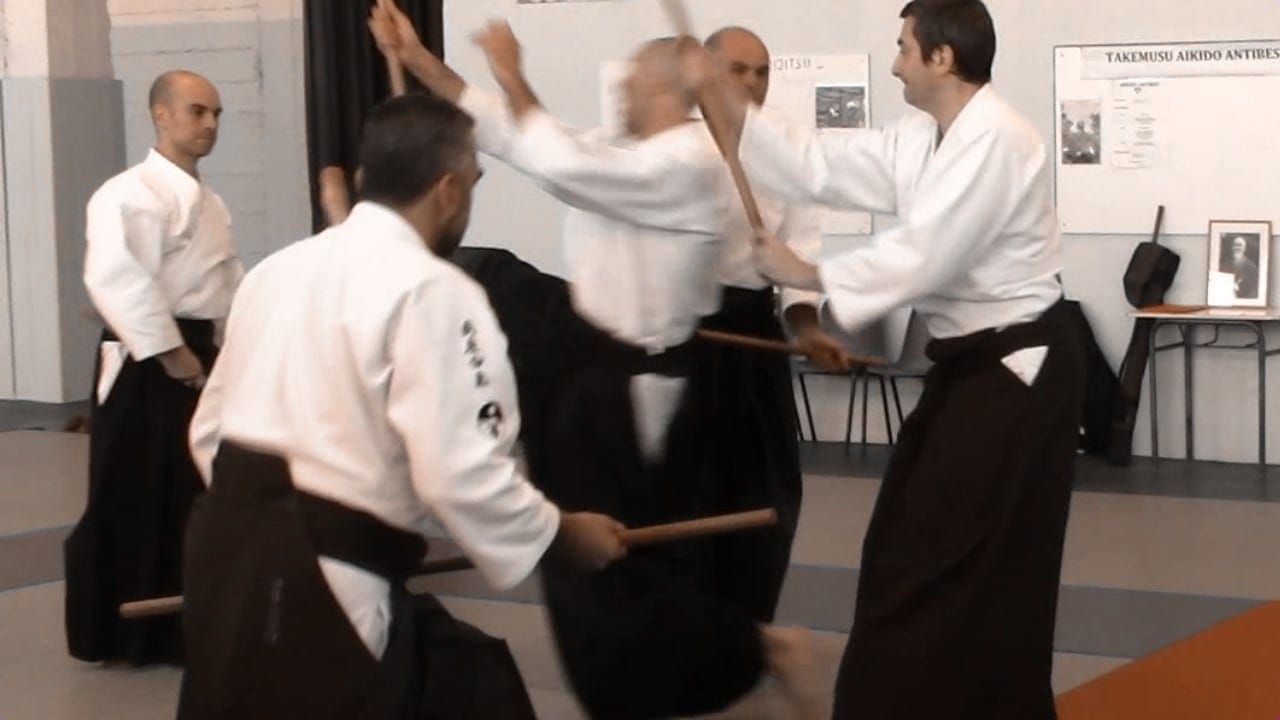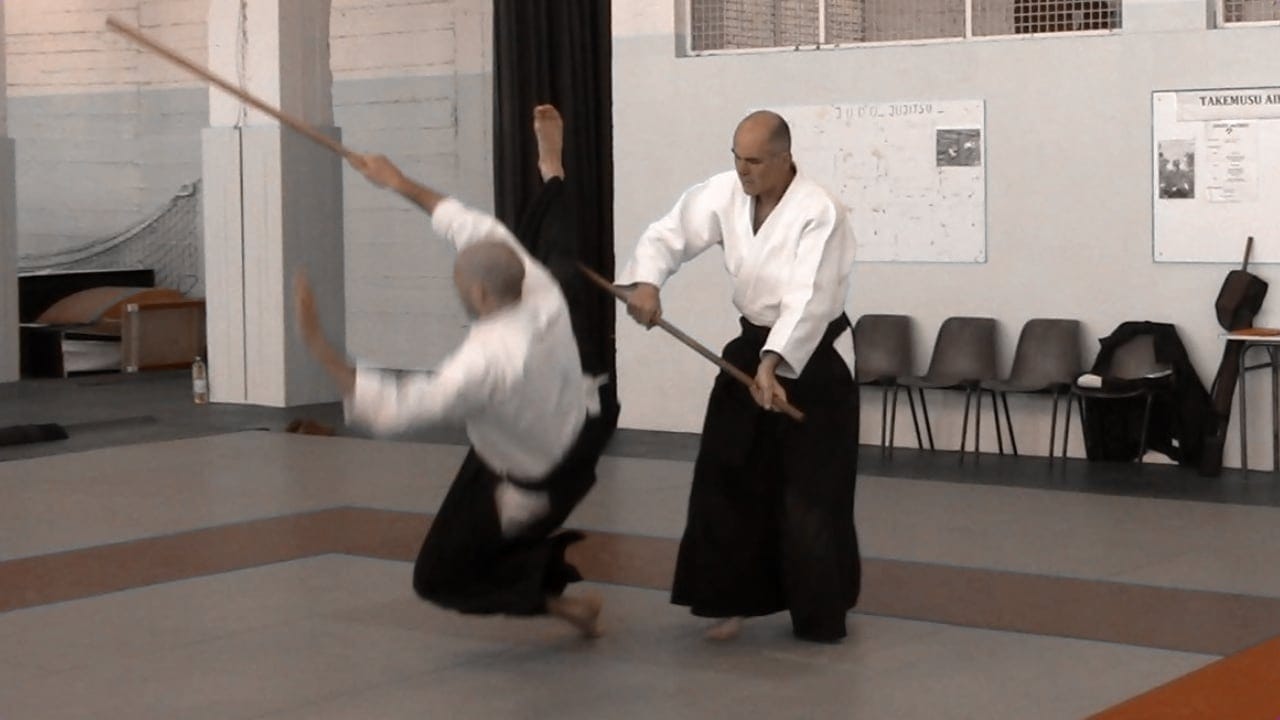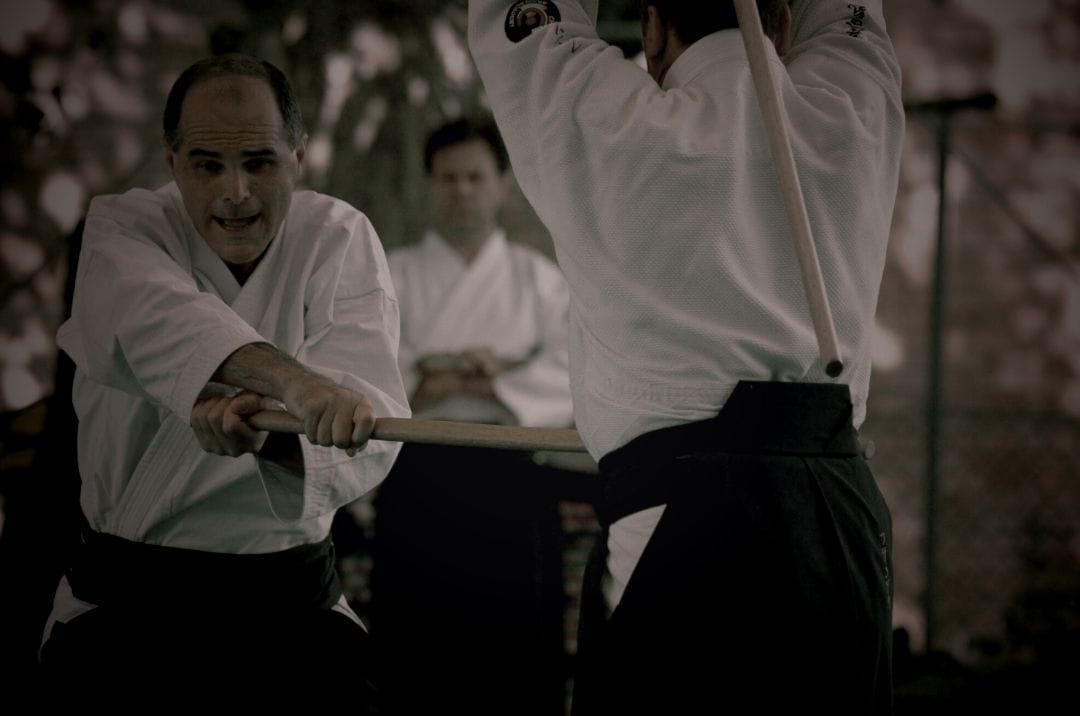The actual technique has been "contracted" in kumijo 7. If you want to recover its original dimension, you have to decompress this kumijo, expand it and reinflate it, so as to rediscover the original context that Morihiro Saito Sensei deliberately reduced to fit the form into the linear perspective of his method.
In other words, the exercise that has been reduced from four directions to one by Saito Sensei with a pedagogical objective, must be restored to the four directions once the pedagogical objective has been achieved, that is, once the form has been learned and understood. This is the kind of work shown in the video :
For it is indeed the same form that will be re-established in all four directions. It is the same form that, instead of being applied four times in a row in the same direction with a single opponent, will be applied in all four directions with four different opponents :

The four techniques that make up the linear exercise known as kumijo 7 do not change when applied in all four directions. They are the same techniques, in exactly the same order, the only thing that changes is that they are no longer applied along the 180° of a straight line, but now according to four different attack origins, within the 360° of the circle.
And I do mean four techniques. Kumijo 7 is not - in fact - made up of three techniques and one variation, as the leg reap and elbow control are the same action. It's a combined action, a single movement in which the upper end of the jo strikes an opponent's elbow (or face), taking advantage of the momentum that allows the lower end of the jo to hook another opponent's leg. The two complementary actions are one and the same, but the leg (gedan) is necessarily just before the elbow (jodan).
In this particularity, we find the answer to the question posed in the previous file : Master Saito presented leg reaping as a base and elbow control as a variation, because this is the obligatory chronological order of the two actions when working with four opponents. Nothing in the method is done without reason, everything has been thought through.
For the purposes of his teaching, Saito Sensei has therefore reduced a complex exercise to a simpler one. But he has done so in such a way as to always retain the possibility of going the other way round, that is, of restoring the complex exercise from the simplified one. It's Master Saito's genius to have made this back-and-forth possible, and it's the goal he set for his method: to give students the indispensable technical foundation to return one day to the truth of movement - to return to Aikido, in other words - after they've spent many years on the long road of Aikido preparation, of Aikido gymnastics...
To betray Saito Sensei is not to leave the realm of method when the time has come to do so; to betray Saito Sensei is to choose the easy way out, to indulge in method all your life, thinking you'll find Aikido there. Morihiro Saito never claimed that Aikido could be found in his method, but he did lay the foundations for discovering Aikido, provided the student understands what is at stake in the approach he has proposed. The nest may be reassuring, but it's only by leaving it that the bird can hope to fly.




